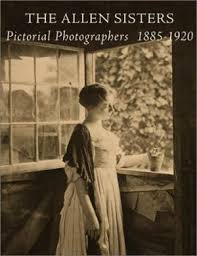The Allen Sisters
Listen to the Recess! Clip
| Author | John Cech |
| Air Date | 9/24/2002 |

The Allen Sisters Transcript
If you’re driving in Northwestern Massachusetts this fall, be sure to go up to Deerfield, a village that hasn’t changed much for the past three hundred years. It was one of the centers of the Arts and Crafts Movement in the late 19th century, when it was also home of Mary and Frances Allen, who were at the time and well into the 20th century, among the best known photographers in the country. In the Memorial Hall Museum in Deerfield, an exhibition of the sisters’ work will be in place until the end of October.
The Allen Sisters grew up in a prosperous, enlightened farmer’s family and in a town that was known, as one journalist at the time wrote, for its “rural peace and plenty, historic associations, artistic expression, and intellectual alertness.”
The Allen sisters were both trained as teachers but had to leave the profession early because each suffered from severe hearing loss, which may have been the result of childhood illnesses. By the 1880s, fortunately, the sisters had also discovered the camera, and they began taking pictures of their students, and later the children in their family, the town, and the surrounding countryside. Photography was one of the few art forms that was open to women, and it was thought that only women could truly capture the spirit of children. Children would become one of the signature subjects of the Allen Sisters, who set up a studio in Deerfield together. They literally ran a cottage industry that employed young family members as models and helpers and often involved the whole town of Deerfield in elaborate pageants — including one in which hundreds of people were dressed as Pilgrims — which the sisters photographed for their line of picture postcards of the even then historic town. They traveled widely, had commissions from national magazines, and exhibitions in major museums around the world. Theirs was what was referred to as the Pictorial style — using posed subjects, but shot only with available light, with their landscapes or their children disappearing into shadows and mists. They tried to capture what they called the “aura” of children — climbing trees, or perched on a hay wagon, reaching up for a mother’s embrace, or simply looking into the camera with pure, calm directness. The Allen Sisters died, both in their eighties in 1941, only four days apart. By then their work had been virtually forgotten, and many of their original glass plate negatives have survived only by sheer good luck. And that’s good luck for us because the Allen Sisters found beauty everywhere they looked.